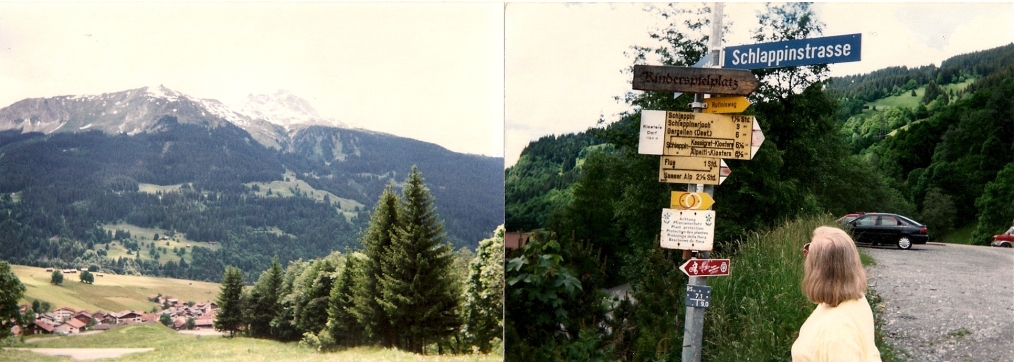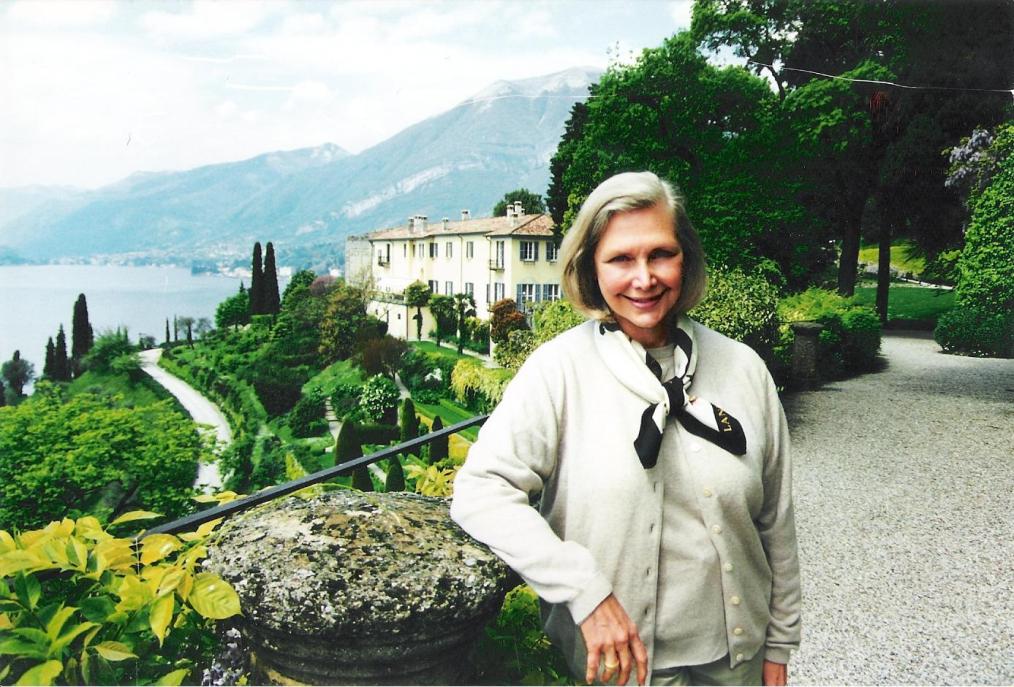My book group has been reading a number of nonfiction books in the past months.
Our summer reading, which I have just finished, is a monumental book, "Far From the Tree: Parents, Children and the Search for Identity," by Andrew Solomon, winner of the National Book Award for "The Noonday Demon," his memoir about depression.
The title of "Far From the Tree" doesn't fully indicate the scope of the subject he treats with great compassion. How parents cope with "exceptional" chldren--children so different from themselves and what they expected when they envisioned their offspring, that it turns their lives on end. The subjects Solomon covers are deafness; dwarfism; autism; Down syndrome; schizophrenia; transgender; profound and multiple disabilities; children who are prodigies, children of rape; children who are criminals.
It is a long book and took the author 10 years to research and write. I ran the gamut of emotions when I read this book. Often, I found myself in tears; many times, I laughed out loud. I have to admit I was frequently depressed and had to put it aside. But it is a book that makes you marvel at the courage and resilience of the human spirit and the strength of parental love.
One of my favorites of the books I've read is "Citizens of London: The Americans Who Stood with Britain in its Darkest Finest Hour," by Lynn Olson. this is a scrupulously researched, fascinating account of the remarkable Americans who lived in England in the 1930s and during World War II, influencing U.S. policy in the years leading up to the war. The correspondent Edward R. Murrow's role has been well-documented and is much admired. But John Gilbert Winant, governor of New Hampshire and ambassador to the Court of St. James from 1941 to 1946, is one of the unsung heroes of the era. He was a tireless advocate for the British, presenting the best face of America at a time when isolationists, such as former ambassador Joseph P. Kennedy, were despised by the British and others. Averell Harriman, appointed by Roosevelt to direct the lend-lease program, strongly believed that America had to save Britain at all costs, lest the world be dominated by Adolph Hitler. Olson covers the human side of the lives she chronicles, documenting the scandals, extra-marital affairs, the character flaws, the fears and dangers these gallant citizens of London were involved in. For anyone who is as intrigued as I am by WWII, this is essential reading.
"The Immortal Life of Henrietta Lacks." by Rebecca Skloots is a highly accessible story of an African-American woman whose cervical cancer cells were harvested without her knowledge by doctors at Johns Hopkins in 1951. They became the "immortal" cell line known as HeLa, that has figured in scientific research and been critical to such medical breakthroughs as the polio vaccine and invitro fertilization. the story raises questions of bioethics and racial discrimination. The irony of Henrietta Lacks's legacy is: Millions have been made by companies that have sold HeLa cells that came from this unknown woman, whose relatives are too poor to afford health insurance.
November: These are some of the books I've read (or reread) over the past few months:
On the heels of Edith Wharton, who had a close friendship with Henry James, my book group decided to read "Portrait of a Lady." What can be said about this monumental novel of class and society and woman's place in both, that hasn't already been said? James champions America and Americans as the brash, modern, heroic antidote to European Old World stodginess and the British class system. Yet he was an American expatriate, spending most of his adult life abroad. His heroine, Isabel Archer, so promising and refreshing in her approach to life, disappoints in the end. James may have enthralled readers in the 19th century, but it is a tedious read for those of us in the 21st. His endless exposition is taxing at times, going on for pages about a character's thoughts; yet he skips vital events entirely--such as Isabel's marriage; the birth of her son and the baby's death at six months of age. We find out about these occurences in Henry James's famous elliptical style--through the bloodless remarks of other characters. I enjoyed "Portrait of a Lady," which I hadn't read since English Lit 101, but it's not for everyone.
"The Weird Sisters" by Sarah Brown, comes by its name from "Hamlet." The three sisters in this unusual novel have imbibed Shakespeare with their mother's milk--or rather, their father's, figuratively speaking. For he is a Shakespearean scholar of the first order at a small Midwestern college, and he eats, sleeps, and breathes the bard's couplets. It's terribly clever; at times a bit much. One longs for him to connect with his daughters in a straightforward, fatherly fashion. But the characters of the three siblings, each unique, make up for any impatience the reader may feel with their pater familias hiding behind Will Shakespeare to avoid displaying emotion. When at last he loses his temper, it's almost a relief. I really liked this book. Sarah Brown set herself a difficult task when she wrote this novel. Only a highly talented writer could bring it off.
"One Thousand White Women," by Jim Fergus. An odd title for a novel, but it turned out to be a fascinating story based on historical events in 1875. Fergus is a journalist and this is his first novel, the tale of May Dodd, a Chicago heiress whose family punished her for falling in love with a poor laborer and bearing his child, by committing her to an insane asylum and taking her baby away. Faced with life in a medieval institution, May volunteers for a secret program funded by the U.S. government to send 1,000 white women as brides for Cheyenne Indians to help them become assimilated into the white man's culture. It's a great yarn. Fergus writes convincingly from the point of view of his female character. His novel is an exciting, rather high-class Western, and I enjoyed every minute. The plan of the Grant administration, to send 1,000 white women as potential brides for Indians, is shocking, but at the time, Western settlers were sending for mail order brides from Australia.
"The Presidents Club; Inside the World's Most Exclusive Fraternity" by Nancy Gibbs and Michael Duffy is a book I can highly recommend. Very well written, it is the true story of how Presidents from Harry Truman to Barack Obama have called upon their predecessors of both parties in times of crisis. A very revealing study written by two historians. If you have preconceived notions of Herbert Hoover; if you thought you knew everything about JFK, Nixon, Ike, or Reagan--think again.
September: "The Warburgs," a fascinating study of a remarkable Jewish family by Ron Chernow, who won the National Book Award for "The House of Morgan." The story of the Warburgs, a clan of German Jewish bankers, who rode out the waves of anti-Semitism in Europe, rising to the top of society in Germany, England and the United States, is a microcosm of modern history. Members of the family were pilanthropists, scholars, artists, and diplomats. The institutions they founded include libraries, museums, and campuses. Their story has everything--triumph, tragedy, suspense, thwarted love, success, and ruin. This tome takes some time to get through, but the narratiive moves along in the skillful hands of a master historian.
July and August: For our summer reading, my book group read two non-fiction books: "The Warmth of Other Suns," a wrenching account of the African American experience and the great migration from the South to the North and West. Written by Isabel Wilkerson, a Pulitzer Prize winning journalist and the daughter of parents who participated in this exodus, it is the gripping tale of a movement that changed the social and cultural face of American cities. Wilkerson follows the stories of three different individuals who left Mississippi, Florida, and Louisiana, for Chicago, Harlem and Los Angeles, respectively. She compares the black migration to other waves of immigration, with less convincing arguments. Her heroes were Americans and they returned to their homes periodically to visit relatives. Those who left Europe or Asia almost never saw those they left behind again. This well-written epic tells the unknown history of the millions of black citizens who fled the South to find a better life in parts of the country where Jim Crow did not exist. Their decades-long struggle to transform themselves resulted in dramatic changes in the demography of America.
The second book we read was "Sophia Tolstoy" by Alexandra Popoff, a biography of Leo Tolstoy's wife, who was much maligned in her lifetime and never given credit for the part she played in her husband's success. Popoff gained access to Countess Tolstoy's unpublished memoirs and papers and after six years of prodigious research, presents a far different potrayal than the popular view of a harsh, spoiled, domineering woman. This negative portrait of Sophia was largely due to Tolstoy's disciple and assistent, Vladimir Chertkov, who was able to suppress publication of Sophia's writings. I was exhausted by this book, imagining the life of this privileged woman who endured 14 pregnancies, a number of miscarriages, the deaths of several children, survived a number of life-threatening illnesses, yet managed her husband's affairs, ran two households, sewed the family's clothing, home-schooled her children, was an accomplished pianist, produced numerous examples of creative embroidery and other needlework, all the while copying by hand the manuscripts for all of Tolstoy's books and acting as his agent and publisher. Her energy and drive were astounding, as was her devotion to Tolstoy, who it turns out, was not a very nice man and an abusive husband. I wish the author had not used reference numbers for notes throughout the text. This was a misjudgment on the part of the editors. End notes would have been just as illuminating and provided a more satisfactory, smoother reading experience.
June: "Steve Jobs," by Walter Isaacson, is one of the most detailed and extensive biographies I've ever read. An ambitious work about a controversial but brilliant entrepreneur, the founder of Apple, whose ideas or adaptations of other people's inventions have had a transformative effect on millions of lives around the world. Beginning with the first personal computer from Apple, through the final incarnation of the iPad, Steve Jobs introduced products that have revolutionized industries from communications to recorded music, bringing such items as the iPhone and iPod into the lives of millions. Isaacson manages to make you care about a rather unsympathetic character, as he draws a portrait of an adopted child who felt abandoned by his birth parents. Yet, I found myself struggling not to dislike Jobs, the man, despite his occasionally endearing qualities. He could be a loyal friend, yet turn on that same person, humiliating him in the presence of others. He could steal concepts without a qualm, yet rage if he perceived a rival had copied an idea for a product from his company. As a family man, he had many failings, yet family meant everything to him. Jobs died at an early age, but he arguably lived more than one lifetime in the years alloted to him. This long, detailed biography is a tale well told, a remarkable achievement from a distinguished American writer.
May: My book group is reading Anita Diament's new novel, "Day After Night." Titles are important and I don't think this is a very good title. The book is based on the true accounts of four women Holocaust survivors interned by the British, after trying to make their way to Palestine at the end of World War II. Maybe I've read too many Holocaust books, but I did not find the stories of the four main female characters as gripping or unique as I expected. The climax of the story--the rescue of the entire camp from the detention center--is a tale of redemption. I found Diament's first novel, "The Red Tent," a much more powerful work than this book. I was enthralled by her characterizations of Biblical women. Anita Diament has a special talent for interpreting Bible stories. The drama of her primary character, the only daughter of Jacob and his first wife, Leah, was more captivating than the well-written, but less engaging "Day After Night."
April: I have just finished Robert K. Massie's masterful biography, "Catherine the Great," and found it a wonderful, readable history of 18th century Russia and the most famous and powerful woman of that era. Catherine was, for her time, an enlightened monarch, but she was still an autocrat and believed in absolute power of the monarchy. It was a time of imperialism and Catherine greatly expanded the Russian empire by waging war against neighboring countries, particularly Turkey. I loved Massie's previous book, Nicholas and Alexandra. Catherine is not as sympathetic a character as the late Tsar and Tsarina and their beautiful daughters, but that may be because events in the 20th Century are more immediate. Massie has the ability to make history read like a novel, and "Catherine the Great" is no exception. I read it on my Kindle, and although I like the Kindle, I found it frustrating not to be able to quickly leaf through the book to refer to previous passages, pictures, and maps. The maps are not easy to read on my Kindle. I have an old version, so the newer e-readers, especially those that have color, would probably be a more satisfactory reading experience. I may give Russian history a breather, but I definitely want to read "Peter the Great," another well-regarded book by Robert K. Massie.
March: My book group has just finished "The Hare with Amber Eyes," by Edmund de Waal. This lauded book is deservedly praised for its fascinating history of a dynastic Jewish family, the Ephrussis, that has all but faded from the scene. What the Holocaust didn't obliterate, lack of male progenitors, either by choice or by sexual orientation, accomplished. The author, a descendant through his grandmother, is a renowned ceramicist and his artistic persona is evident in the writing. All that remains of a once boundlessly wealthy family's inheritance is a collection of netsuke, miniature Japanese sculptures, that now belong to him. These are the vehicle through which he tells the story of the Ephrussi family, tracing their history from Odessa to Paris, to Vienna, to Tokyo, and finally, to London. I found the book difficult in the beginning, but after plowing through the first 90-some pages, became engrossed. It's worth the effort. In some ways, it is an eye-opener. I will never view some of my favorite Impressionist painters in the same light.
Speaking of favorites, an author that I love is Jane Gardam, the British writer, whose "mordantly funny" prose is habit forming. Gardam has won many literary prizes. If you haven't discovered this wonderful author of "Old Filth," "The Man in the Wooden Hat," and "The People on Privilege Hill," I urge you to start reading her immediately.
January: I've recently finished "The Samurai's Garden," by Gail Tsukiyama (published in 1994). An elegant, lyrical story about the years leading up to WWII in Japan and China.
"Russian Winter," by Daphne Kalotay, is a beautifully written novel about a mysterious ballerina who once danced with the Bolshoi, and the priceless amber necklace she is offering at auction.
"Wolf Hall," a novel by Hilary Mantel, won the Man Booker Prize and is well worth the challenge of its many characters and complicated history. The rise and fall of Thomas Cromwell is fascinating in this lively foray into Henry VIII's court.
Shhh! I have a secret vice. I love to read thrillers. Novels about spies, international intrigue, or political skulduggery. After a long day of writing or doing research for my work-in-progress, I like to curl up with a good read--something that isn't too challenging. Some of my favorite writers of the "thriller" genre are John LeCarré, Ian Fleming, and most recently, Daniel Silva. Silva's novels are thoroughly researched, well written, and highly entertaining. Fortunately, he has produced many books, so I can look forward to hours of diversion.








